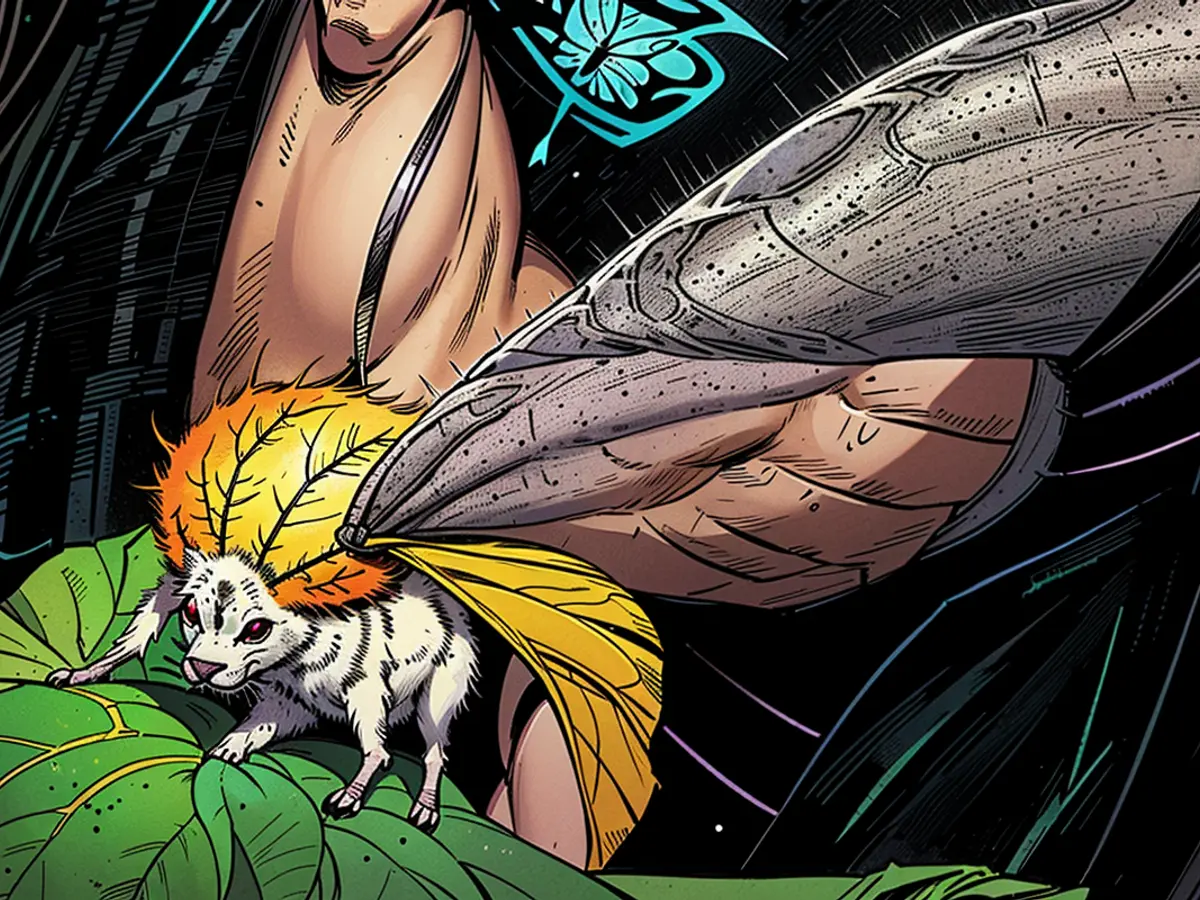Transformed Butterfly Serves as a Symbol of Evolution's Process
Marvelous butterflies, boasting enchanting camouflage abilities, are a sight to behold. A extraordinary specimen, adorned with delicate hues and a mane reminiscent of a lion, is a testament to evolution's wonders. Scientists made this discovery upon comparison with less prominent kin - the disco gene holds significant importance.
A harmonious blend of pink and a yellow backside, resembling bananas, gives off a fairy tale ambiance for some butterflies. The less noticed cousin within this vibrant strawberry topping swirl, is a captivating example of species development, as featured in the journal "Proceedings B" by the British Royal Society.
As captivating as the butterfly Dryocampa rubicunda appears with its delicate colors and untamed lion's mane: One can only spot it in the dark. The closer resemblance of the more elusive cousin, the Anisota group of eyed hawkmoths, becomes apparent throughout the day.
Disco in the genome
The so-called disco gene is the factor behind this, according to the research led by Yan Sondhi, a US scientist based at Florida International University and the Florida Museum of Natural History. It governs the day-night cycle in insects, and its influence is different in both butterflies.
Most likely, modifications to the disco gene resulted in the current Dryocampa butterflies adapting to nighttime flight, thereby diverging into two species from a single original one. In Anisota butterflies, females are active at dusk and early evening, while males favor the daytime, the researchers share.
Recently separated
The original species separated relatively recently in evolutionary terms: "just" around 3.8 million years ago. Today, the resulting species are amongst the smallest eyed hawkmoths in North America.
New species frequently form due to geographic isolation, such as when a mountain range serves as a barrier. Secluded populations develop independently and eventually lose the ability to interbreed, producing offspring.
The ancestors of Dryocampa and Anisota, however, inhabited the same region. How does speciation occur under such circumstances?
A matter of genes
Initially, Sondhi suspected variations in color vision as the basis for the division between diurnal and nocturnal creatures. However, that was not the case - instead, differences in the so-called clock genes controlling the day-night cycle of organisms emerged.
Alterations in the amount of proteins these genes produce result in cells becoming active or dormant, influencing various facets of the body, including metabolism, cell growth, blood pressure, and body temperature, as the researchers explain.
According to Sondhi and his team, the night-active, sweet-hued butterflies devoted more energy to their olfactory capabilities, while their diurnal counterparts invested more in genes related to vision.
The discovery of the disco gene in butterflies highlights its role in determining their activity periods. The gene governs the day-night cycle in insects, leading to significant differences between Dryocampa and Anisota butterflies.
The adaptation of Dryocampa butterflies to nighttime flight, resulting from modifications to the disco gene, has played a significant role in their evolution and species separation.







